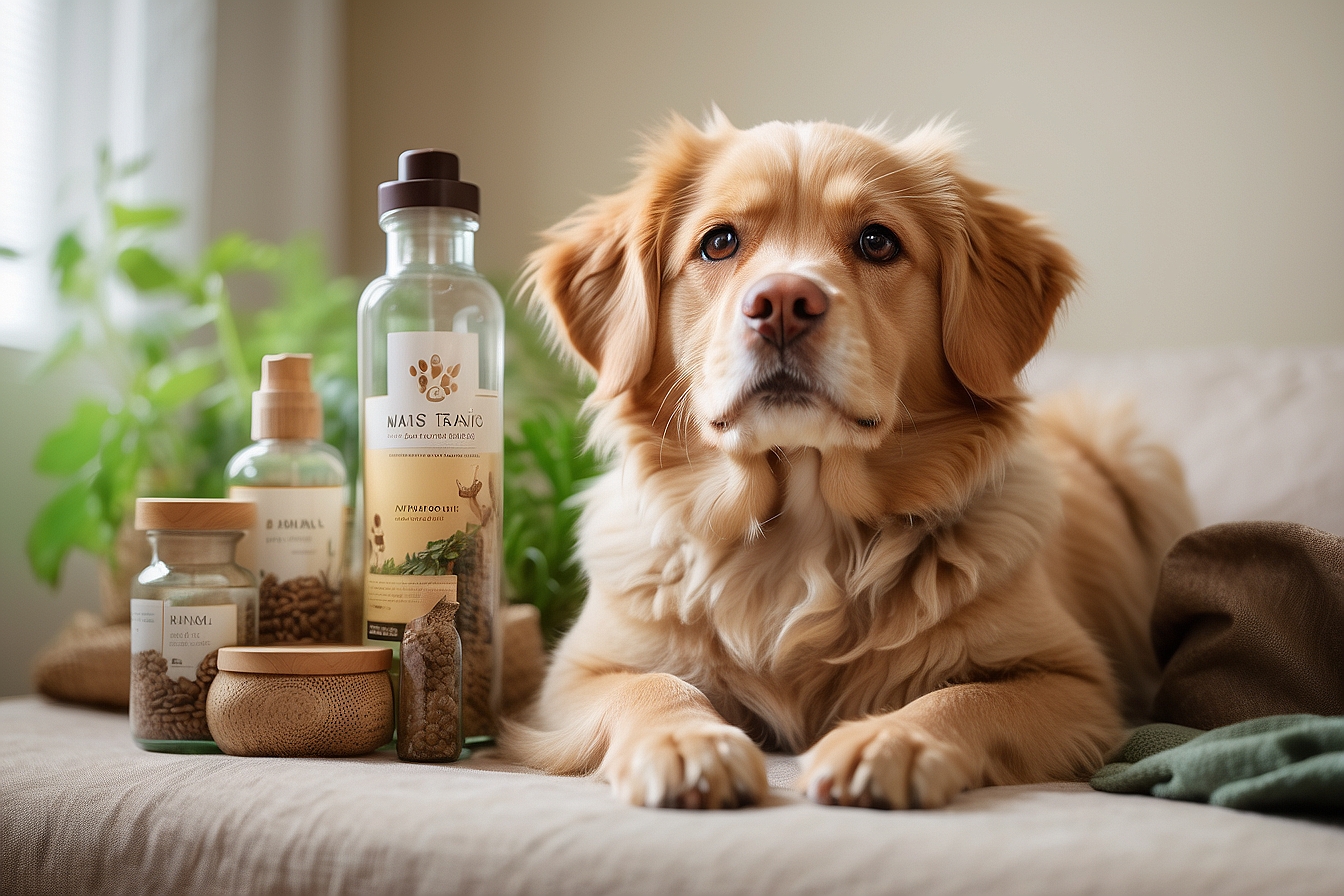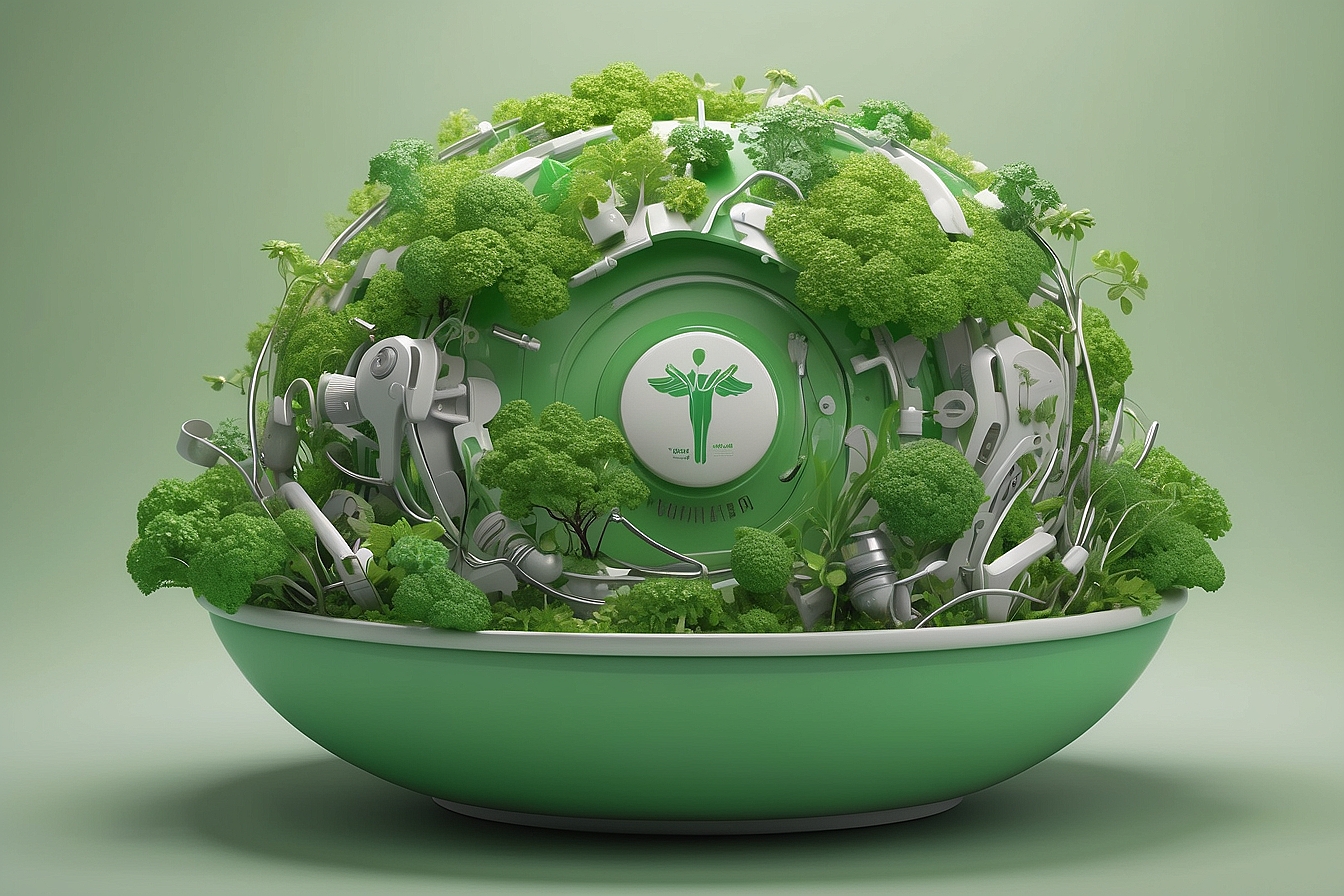We all face the task of nurturing our well-being, and let’s be honest, it isn’t always straightforward. We’re walking this path alongside you and have unearthed a treasure trove in the unlikeliest of places – our very own gardens.
Our blog is set to peel back the green curtain to show how these humble patches can become sanctuaries of natural healing. Imagine plants with deeply rooted therapeutic powers, honoured since time immemorial – in fact, there are more than 28,000 plant species recognised for their medicinal properties! So roll up your sleeves; it’s time to foster health just beyond your back door.
Key Takeaways
- Growing medicinal herbs at home offers sustainable health benefits and reduces reliance on pharmaceuticals.
- Plants like calendula, lemon balm, mint, Spilanthes, echinacea, lavender, chamomile, rose, violets and dandelions possess therapeutic properties that aid in treating various ailments.
- Cultivating a garden with healing plants supports biodiversity and enhances environmental conservation efforts.
- Learning to identify and use medicinal herbs properly can safely incorporate natural remedies into everyday life for improved well-being.
- Adding other beneficial plants such as sage, oregano, dill and marigold to your garden expands the range of available home remedies for common health issues.
Understanding the Power of Medicinal Herbs in Your Garden
The benefits of using homegrown herbal remedies are numerous, from the sustainability of growing your own medicine to the potent healing properties of fresh herbs. Plants have been used as medicine for centuries, and this traditional approach offers a natural and holistic alternative to modern pharmaceuticals.
Benefits of Using Homegrown Herbal Remedies
Growing our own medicinal herbs offers a wealth of advantages. We harness the ability to create natural remedies right from our garden, providing an on-demand supply for treating minor ailments like colds and stomach upsets.
It’s empowering to know that the plants we nurture can also support our health in such direct and practical ways.
Using homegrown herbal medicine reduces our reliance on pharmaceutical products, often saving us trips to the pharmacy. Furthermore, when we grow these healing plants organically, we ensure they are free from harmful chemicals.
This practice not only benefits our wellbeing but also contributes positively to environmental conservation by promoting biodiversity and soil health.
As we explore the uses of each plant in greater detail under ‘Plants as Medicine: The Traditional Approach’, keep in mind how simple it is to incorporate nature’s bounty into your healthcare routine.
Plants as Medicine: The Traditional Approach
Plants have been used as medicine for centuries. Our ancestors relied on traditional herbal remedies to treat various ailments and maintain good health. The rich history of using plants as medicine is deeply rooted in cultures around the world, reflecting the profound healing properties found in nature.
Traditional approaches to plant-based medicine encompass a wide range of practices, from Ayurvedic and Chinese medicine to Native American herbalism, each with its own unique methods of utilising medicinal plants for holistic healing.
Understanding the traditional approach to using plants as medicine provides valuable insight into the diverse ways in which different cultures have harnessed the power of nature for wellness.
Top 10 Medicinal Herbs to Grow in Your Garden
Discover the top 10 medicinal herbs to grow in your garden and learn about their powerful healing properties. From calming chamomile to immune-boosting echinacea, these plants can provide natural remedies for a variety of health concerns.
Calendula (Calendula officinalis)
Calendula, also known as pot marigold, boasts vibrant orange and yellow blooms that can brighten any garden. This herb not only adds a cheerful pop of colour but also offers valuable medicinal properties.
Calendula is celebrated for its anti-inflammatory and antiseptic abilities, making it useful in treating skin conditions such as cuts, bruises, and minor burns. Additionally, the petals of this stunning flower can be used to create natural dyes for textiles or homemade products like soaps and salves.
Including calendula in your garden provides both aesthetic appeal and practical healing benefits.
Furthermore, if you are environmentally conscious and value organic healing remedies, cultivating calendula fits naturally into your sustainable lifestyle. This hardy annual plant thrives in a variety of soils with minimal care required once established.
Lemon Balm (Melissa officinalis)
Lemon balm, also known as Melissa officinalis, is a fragrant herb with numerous health benefits. It is well-loved for its calming properties and is often used to alleviate stress and anxiety.
In addition, lemon balm has antiviral properties that can help in fighting off cold sores caused by the herpes virus. The leaves of this herb can be used to make a soothing tea that aids digestion and promotes relaxation.
Lemon balm is an easy-to-grow herb that thrives in sunny locations and well-drained soil, making it a great addition to any medicinal garden.
Mint (Mentha spp.)
Mint, a versatile and aromatic herb, offers a multitude of benefits for both the body and mind. Its natural properties make it an excellent choice for aiding digestion, alleviating nausea, and combating headaches.
With its refreshing scent and cooling sensation, mint is also great for reducing stress and improving mental clarity. Whether used in teas or as a garnish for desserts and savoury dishes, mint adds a delightful burst of flavour to any culinary creation.
In the garden, mint is easy to cultivate and can even serve as a natural insect repellent due to its strong scent.
Spilanthes (Acmella oleracea)
Spilanthes, also known as the toothache plant, enhances oral health due to its natural analgesic properties. It is believed that Spilanthes can help alleviate toothaches and mouth ulcers while promoting overall dental hygiene.
This powerful herb is rich in antioxidants and has been traditionally used for its antibacterial and antifungal properties, making it an ideal addition to your homegrown remedies for oral care.
When grown in your garden, Spilanthes thrives in well-drained soil with plenty of sunlight. It’s a low-maintenance plant that adds not only medicinal value but also aesthetic appeal to your garden.
Echinacea (Purple Coneflower) (Echinacea purpurea)
Echinacea, also known as Purple Coneflower, holds a prominent place among medicinal herbs due to its immune-boosting properties. Its vibrant purple petals and spiky orange center make it an attractive addition to any garden.
Echinacea has been used for centuries in traditional herbal medicine to alleviate colds, flu, and other respiratory infections. This hardy perennial is easy to grow and can thrive in various conditions while attracting pollinators to your garden.
The roots, flowers, and leaves of Echinacea are commonly used in teas, tinctures, and extracts for their therapeutic benefits.
Lavender (Lavandula angustifolia)
Lavender (Lavandula angustifolia) thrives in well-drained soil and plenty of sunshine, making it an excellent addition to any garden. Its fragrant purple blooms are not only visually appealing but also boast a range of medicinal properties.
With its calming aroma, lavender is commonly used in aromatherapy to reduce stress and anxiety. Additionally, its antiseptic and anti-inflammatory qualities make it a versatile herb for treating minor wounds and skin irritations.
Furthermore, incorporating lavender into teas or infusions can aid in relieving headaches and promoting relaxation.
Chamomile (Matricaria chamomilla)
Chamomile, a member of the daisy family, grows easily and abundantly in a garden. This herb is prized for its calming properties and is often used to ease stress and anxiety. Chamomile flowers can be harvested to make a soothing tea that aids in relaxation and promotes better sleep.
Furthermore, chamomile possesses anti-inflammatory properties, making it useful for treating skin conditions such as eczema and irritations. Its gentle nature also makes it suitable for relieving digestive discomfort when brewed into a mild tea.
Another benefit of chamomile is its versatility – not only can it be consumed internally as a herbal infusion, but it can also be infused into oils or added to baths for topical use.
Rose (Rosa spp.)
Now, turning our attention to another valuable addition to your garden, the rose (Rosa spp.) offers more than just its beautiful appearance. With its natural antiseptic and anti-inflammatory properties, roses can be used in home remedies to soothe skin irritations and minor burns.
In addition, rose petals are known for their high vitamin C content which can help boost the immune system when ingested or brewed into a tea. This fragrant flower is not only pleasing to the senses but also holds significant medicinal benefits that make it a worthy inclusion in any environmentally conscious individual’s garden therapy or alternative medicine approach.
By cultivating these multifunctional plants in your garden, you can contribute to the conservation of botanical medicine while embracing traditional remedies for holistic health and well-being.
Violets (Viola odorata, Viola sororia)
Violets, including Viola odorata and Viola sororia, are not just pretty flowers; they also offer medicinal benefits. These delicate blooms have been used for centuries in herbal medicine due to their anti-inflammatory and antiseptic properties.
Violets can be used to make soothing teas or tinctures that may help alleviate coughs, sore throat, and respiratory congestion. Additionally, violets are rich in vitamins A and C, making them a great addition to salads or smoothies for an extra nutritional boost.
When planting violets in your garden, consider their low-maintenance nature and ability to thrive in shaded areas with moist soil. Their beautiful purple flowers can also attract pollinators while providing therapeutic benefits for you and your family.
Dandelions (Taraxacum officinale)
Dandelions (Taraxacum officinale) are more than just pesky weeds. They have a long history of culinary and medicinal use, and they’re easy to cultivate in your garden. Dandelion leaves can be used in salads as they are rich in vitamins A, C, and K.
The roots can be dried and brewed into a tea that supports digestive health. Dandelion flowers are also beneficial – you can make them into a soothing dandelion salve or use them to infuse oil for homemade skincare products.
Moreover, the entire dandelion plant is known for its detoxifying properties and has been traditionally used to support liver function.
Once established, dandelions thrive without much effort, making them perfect for environmentally conscious individuals looking to incorporate low-maintenance plants into their gardens.
How to Grow and Use Healing Plants from Your Garden
Cultivate your medicinal herbs with care and attention, identifying them correctly and incorporating them into your daily routine for natural healing benefits. Read on to discover how to nurture your garden to nurture your health.
Cultivation Tips for Medicinal Herbs
To cultivate medicinal herbs, choose a sunny location with well-draining soil. Ensure that the chosen area receives at least 6-8 hours of sunlight daily, allowing the plants to thrive.
Regular watering is vital for healthy growth, but make sure not to overwater as this can lead to root rot. When planting, provide adequate space between each herb to prevent overcrowding and promote air circulation.
Mulch around the herbs to retain moisture and suppress weed growth, aiding in overall plant health.
Prune your medicinal herbs regularly to encourage new growth and maintain their shape. This practice also helps prevent overcrowding and disease. Additionally, be mindful of pests and diseases by inspecting your plants regularly.
Identification of Medicinal Herbs
When cultivating medicinal herbs, it’s crucial to accurately identify each plant. Look for unique characteristics such as leaf shape, colour, and flower appearance. Use field guides or online resources for help when distinguishing between similar-looking species.
Remember that proper identification ensures the safe use of these plants in home remedies and prevents any potential mix-ups.
As you explore your garden, keep an eye out for specific features like the distinctive serrated leaves of mint or the daisy-like flowers of chamomile. Take note of any unusual growth patterns or scent differences among various herbs.
Incorporating Healing Plants into Your Daily Routine
Incorporating healing plants into our daily routine can be as simple as brewing a cup of calming chamomile tea before bed, or adding freshly chopped mint to our morning smoothie. We can also infuse olive oil with fragrant lavender for a soothing massage oil or create a homemade salve using the antibacterial properties of calendula.
From herbal sachets to cooking with fresh herbs, there are countless ways to integrate the power of plant-based medicine into our everyday lives, promoting both wellness and environmental sustainability.
By consciously incorporating healing plants into our daily routines, we not only support biodiversity in our gardens but also nurture our health naturally, fostering a deeper connection with nature and reducing reliance on synthetic products.
Whether it’s cultivating a pot of rosemary on the windowsill or crafting an aromatic herb-infused vinegar for culinary use, embracing these natural remedies from our garden is an empowering step towards holistic well-being.
Additional Home Remedies from the Garden
In addition to the top 10 medicinal herbs, there are several other beneficial plants you can grow in your garden for home remedies. Sage, oregano, dill, and marigold all have healing properties that can be used as natural remedies for various ailments.
Sage (Salvia spp.)
Sage, a versatile herb with silvery-green leaves and a distinctive aroma, offers more than just flavour in the kitchen. While commonly known for seasoning dishes, sage has been used for centuries as a natural remedy due to its strong medicinal properties.
Sage contains compounds that have anti-inflammatory and antioxidant effects, making it valuable in traditional medicine and herbal treatments. Its leaves can be brewed into a tea that may help alleviate sore throats and aid digestion.
Additionally, sage essential oil is used in aromatherapy to promote relaxation and reduce stress levels. Embracing the cultivation of sage in your garden not only serves culinary purposes but also provides access to plant-based medicine for various ailments.
Cultivating sage not only adds beauty and fragrance to your garden but also supports conservation by promoting biodiversity. As environmentally conscious individuals supporting conservation efforts, growing this herb helps preserve its historical significance while contributing to the ecosystem’s overall health.
Oregano (Origanum vulgare)
Moving on from sage, another valuable addition to your garden is oregano (Origanum vulgare). Oregano is not just a culinary herb; it also offers numerous health benefits. This aromatic herb is packed with antioxidants and has natural antibacterial properties, making it an excellent choice for supporting overall health.
Oregano can be used fresh or dried in cooking, as well as in teas and tinctures for its medicinal properties. Growing oregano in your garden ensures a fresh supply of this versatile herb for both culinary and holistic purposes, enhancing your sustainable lifestyle while contributing to eco-friendly herbal remedies.
Dill (Anethum graveolens)
Dill, also known as Anethum graveolens, is a versatile herb that can be grown in your garden to not only add flavour to your culinary dishes but also to provide medicinal benefits.
This herb is rich in essential oils and flavonoids, making it a valuable addition to your home remedies. Dill has been traditionally used for its digestive properties, helping to alleviate indigestion and bloating.
Additionally, it contains antimicrobial properties, aiding in fighting off harmful bacteria. You can incorporate dill into your daily routine by adding it to salads, soups, or infusing it into tea for its therapeutic effects.
Growing dill in your garden is relatively straightforward; it thrives in well-drained soil and requires ample sunlight. By nurturing this herb at home, you not only have access to a fresh and potent ingredient for your cooking but also a natural remedy at arm’s reach.
Marigold (Tagetes spp.)
Marigold, with its vibrant blooms and powerful medicinal properties, is a valuable addition to any garden. Its anti-inflammatory and antimicrobial qualities make it an excellent remedy for minor cuts, scrapes, and insect bites.
The flowers are also traditionally used in teas to aid digestion and soothe stomach discomfort. Additionally, marigolds can act as a natural pest repellent in the garden when planted alongside vegetables due to their strong scent.
Growing marigolds is straightforward; they thrive in well-drained soil and under full sunlight. Regular deadheading of spent blooms encourages continuous flowering throughout the season.
Conclusion: Nurturing Your Garden to Nurture Your Health.
Nurturing your garden with healing plants can enhance your well-being. Incorporating natural remedies from your garden into daily life promotes a healthy lifestyle. Cultivating medicinal herbs offers an eco-friendly, sustainable approach to self-care.
Embracing plant-based medicine nurtures the environment while supporting your health and wellness.
FAQs
1. What are some natural remedies I can find in my garden?
In your garden, you can find a variety of culinary herbs and plants that serve as plant-based medicine for many health issues.
2. Can I really use herbs from my garden to treat minor ailments?
Yes, culinary herbs grown in your garden like mint, rosemary, and thyme have properties that make them useful for treating minor ailments at home.
3. How do these plants work as medicine?
Plants contain natural compounds that can help the body heal; when used correctly, they act as gentle remedies with fewer side effects compared to conventional drugs.
4. Is it safe to make my own herbal remedies at home?
Always research or consult an expert before using any plant-based medicine from your garden to ensure safety and proper usage.





